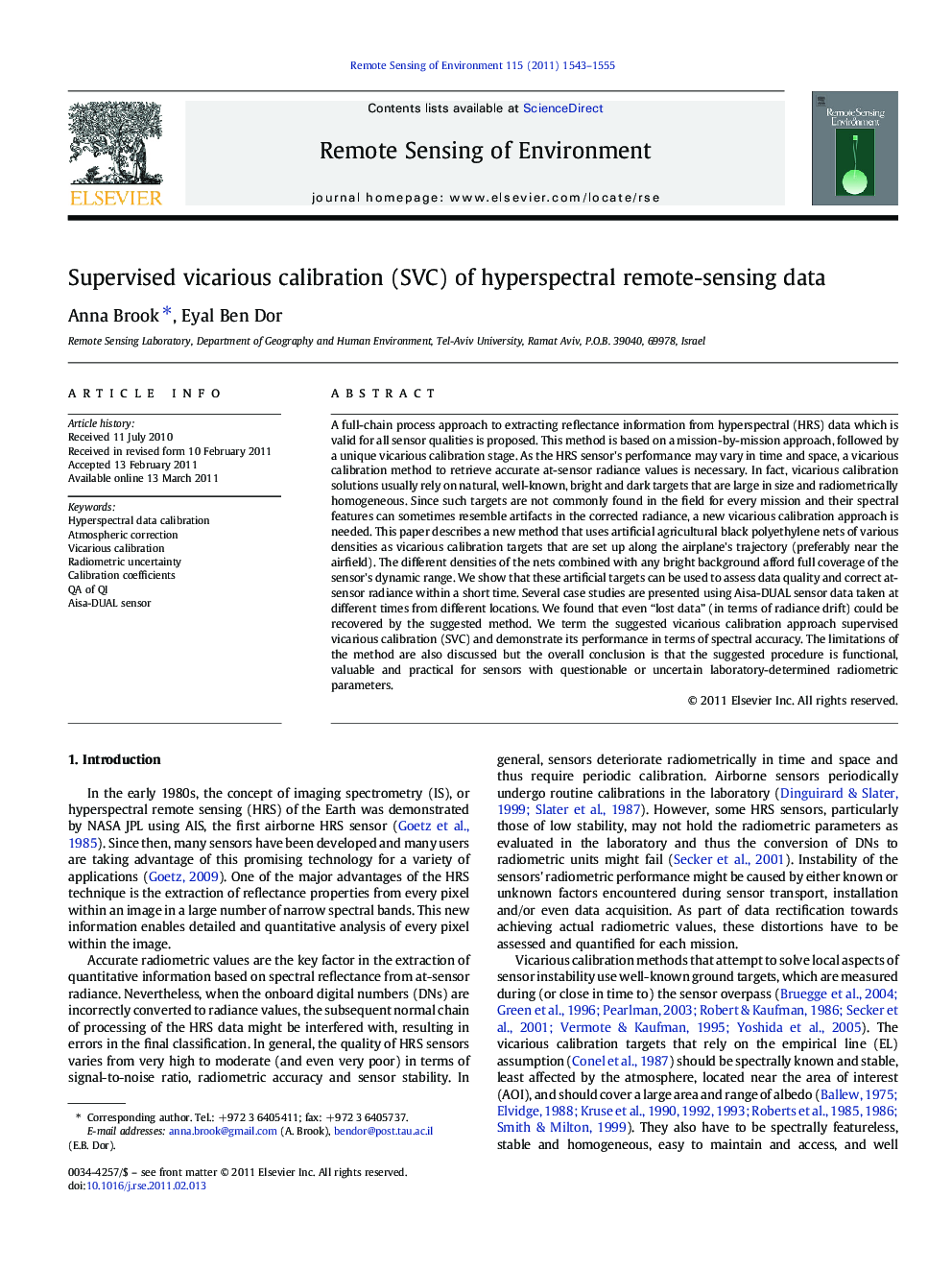| Article ID | Journal | Published Year | Pages | File Type |
|---|---|---|---|---|
| 4459391 | Remote Sensing of Environment | 2011 | 13 Pages |
A full-chain process approach to extracting reflectance information from hyperspectral (HRS) data which is valid for all sensor qualities is proposed. This method is based on a mission-by-mission approach, followed by a unique vicarious calibration stage. As the HRS sensor's performance may vary in time and space, a vicarious calibration method to retrieve accurate at-sensor radiance values is necessary. In fact, vicarious calibration solutions usually rely on natural, well-known, bright and dark targets that are large in size and radiometrically homogeneous. Since such targets are not commonly found in the field for every mission and their spectral features can sometimes resemble artifacts in the corrected radiance, a new vicarious calibration approach is needed. This paper describes a new method that uses artificial agricultural black polyethylene nets of various densities as vicarious calibration targets that are set up along the airplane's trajectory (preferably near the airfield). The different densities of the nets combined with any bright background afford full coverage of the sensor's dynamic range. We show that these artificial targets can be used to assess data quality and correct at-sensor radiance within a short time. Several case studies are presented using Aisa-DUAL sensor data taken at different times from different locations. We found that even “lost data” (in terms of radiance drift) could be recovered by the suggested method. We term the suggested vicarious calibration approach supervised vicarious calibration (SVC) and demonstrate its performance in terms of spectral accuracy. The limitations of the method are also discussed but the overall conclusion is that the suggested procedure is functional, valuable and practical for sensors with questionable or uncertain laboratory-determined radiometric parameters.
Research highlights► A full-chain process approach to extracting reflectance hyperspectral data. ► A mission-by-mission approach, followed by a unique vicarious calibration stage. ► The SVC method uses black polyethylene nets of various densities. ► Several case studies are presented using Aisa-DUAL sensor.
